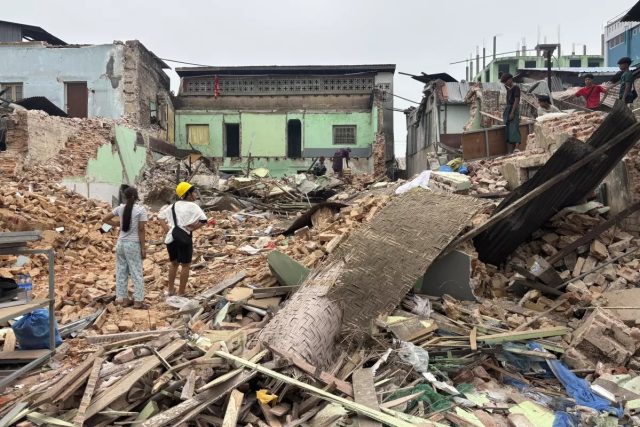UNITED NATIONS, Sunday, April 20, 2025 (WNP): Thousands of families in Myanmar remain without shelter, clean water, or medical care nearly three weeks after powerful earthquakes devastated central regions of the country, the United Nations warned.
The twin earthquakes, which struck on March 28, have killed at least 3,700 people, injured over 4,800, and left 129 missing. However, UN humanitarian officials caution that the real toll is likely far higher, citing ongoing challenges with data collection and reporting in the disaster-hit zones.
Since the initial quakes, more than 140 aftershocks—some as strong as magnitude 5.9—have rocked the region, worsening the psychological strain on already displaced and vulnerable communities, particularly children, the UN Office for the Coordination of Humanitarian Affairs (OCHA) said in an update Friday.
“Frequent strong aftershocks continue to shake central Myanmar almost daily, fueling fear and uncertainty,” OCHA noted, adding that many families are forced to sleep outdoors, exposed to harsh weather conditions and threats from disease and venomous wildlife.
The series of tremors has also severely hampered relief operations. Experts fear aftershocks could persist for months, given Myanmar’s high seismic activity.
More than 4.3 million people urgently require access to clean water and sanitation after the earthquakes destroyed water systems, collapsed over 42,000 latrines, and triggered widespread power outages, disrupting water supplies in many areas. The damage has forced residents to rely on unsafe water sources, heightening the risk of waterborne diseases.
Malnutrition is emerging as another critical concern, with food insecurity intensifying and access to nutrition support becoming increasingly difficult.
The disaster has also dealt a heavy blow to Myanmar’s education system, with hundreds of classrooms damaged just weeks before the start of the new school year in June. Restoration of water, sanitation, and hygiene facilities is critical before students can safely return.
Agriculture, a lifeline for millions, has been hit hard. The worst-affected areas account for a third of Myanmar’s cereal output and 80% of its maize production. With the crucial monsoon planting season approaching, damage to farmland and infrastructure threatens to deepen food insecurity.
“Livelihoods have been shattered due to widespread destruction of farmland, essential services, and income-generating activities,” OCHA said.
Despite the immense challenges, humanitarian agencies and local responders have reached more than 240,000 people with emergency food, medical supplies, and essential items as of April 18. Over 100 tonnes of medical aid have been delivered, and mobile health teams are providing trauma care and psychosocial support in the worst-hit areas.
Still, the scale of the crisis demands far greater action, OCHA stressed. Last week, the UN and partners launched a $275 million appeal to extend urgent relief to an additional 1.1 million people.
This funding call adds to the $1.1 billion humanitarian response plan initiated in December 2024 to assist 5.5 million of Myanmar’s most vulnerable citizens grappling with conflict and chronic hardship.




